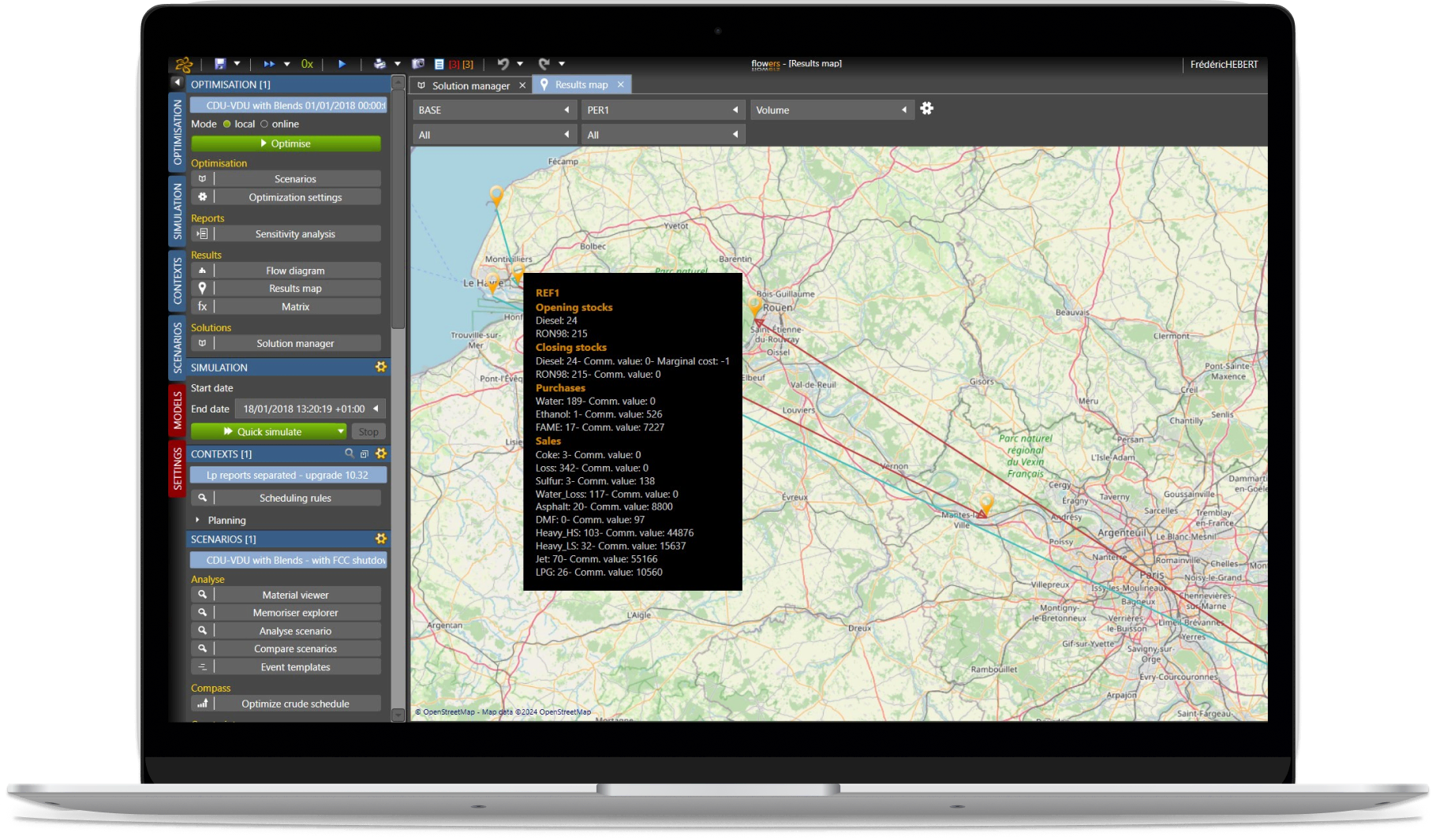With Flowers, establish your master plan and refine your strategic orientations

In the broad sense, the optimization of network design covers a wide variety of investment decisions, including the choice of the location of industrial processes on production sites, that of warehouses and depots on a logistics network, or that of services on a territory. These decisions impact not only operational efficiency, but also the sustainability and social responsibility of organizations.
In addition to defining the network topology, it is often a matter of deciding the best implementation date taking into account changes in demand and costs.

Best position your industrial and logistics structures
The location of industrial processes is a strategic decision that influences the performance and profitability of a company. The optimal choice of these locations integrates factors such as proximity to raw materials, synergy with existing processes, geographic distribution of forecast demand, transportation costs, and environmental regulations. An optimized network enables efficient flow of goods, minimizing transit time, logistics costs, and carbon footprint. Taking into account the synergy with existing processes on each site improves overall profitability and minimizes energy consumption.
Your logistics depots placed in the right place
In logistics, network design optimization helps determine the optimal location of depots to maximize efficiency and minimize costs. Optimization algorithms take into account factors such as customer demand, storage capacities, transportation costs and delivery times. An optimized logistics network improves inventory management, reduces waste, and enables faster and more reliable distribution.
Territorial services as close as possible to needs
Regarding the location of services in a territory, the optimization of network design has the potential to improve accessibility and equity. Whether for healthcare, education, or public services, strategic location can enable broader coverage, better quality of service and greater user satisfaction. The analysis of geographic data, combined with optimization algorithms, makes it possible to balance the load between different installations.
The Flowers platform provides all the necessary components for optimizing location decisions in each of the above areas. It combines powerful modeling and optimization capabilities and great ease of use and analysis, thanks in particular to the following features:

- Fluid and efficient definition of a large number of alternative scenarios and their combination thanks to extensive parameterization capabilities.
- Taking into account logical constraints that link investments together.
- Representation of transport costs and capacities between sites.
- Graphical representations of solutions on a map, in addition to detailed material and economic balance reports